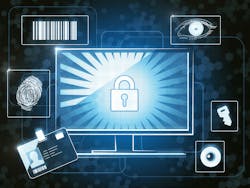As security professionals continue to evolve systems and operations from being reactive to proactive, the concept of predictive analytics is quickly gaining traction.
On the surface, it would appear that the trend towards predictive analytics burst onto the pro security scene almost overnight. The truth is, it has been an area of intense software development for several years, and now that there are detection devices such as HD cameras and various sensor technologies that can capture extreme details, there is sufficient data available to feed predictive analytic platforms. The same holds true with conventional IT services, where online activities on private and public networks can be tracked with great precision.
The amount of available data can be staggering as we move deeper into the age of the Internet of Things, a constantly evolving and maturing concept that sees more and more devices and systems connected onto a network platform. Without the right tools, collecting and analyzing all this data from disparate sources can prove difficult, if not impossible for your customers.
However, powerful software solutions behind the most advanced predictive analysis technologies can simplify these tasks through automation, and further increase the effectiveness of integrated security systems.
The Changing Role of Access Control
Networked access control solutions are no longer discrete and separate from other security and non-security systems and data sources. With the capability to integrate with parking, video, time-and-attendance, identity management and a variety of other data sources, access control systems can provide and share information that strengthens the predictive analysis model. The interconnectivity of these advanced systems enables stronger and more effective access control, including evaluation and performance of policies and procedures.
For example, when creating access control credentials, organizations can integrate human resources and access control systems to enable personnel data to automatically populate and program identity card data fields. Another popular application for your customers is to integrate access control and video surveillance systems to verify that a person using credentials to enter a facility is who they say they are.
As networked platforms drive demand for higher-level systems that offer increased integration and scalability, innovation continues to come rapidly to access control systems, providing end-users with greater situational awareness and more heightened security in general.
With the ability to correlate information to provide actionable intelligence that delivers tangible value to an organization, access control solutions have become a source of data that provides business intelligence that go beyond traditional physical security.
As access control solutions continue to evolve to offer a greater number of advanced capabilities, these systems are transcending their traditional roles to become a single platform that enables users to monitor facilities and share data with other systems. As a result, access control solutions are playing a critical role in the emerging predictive analysis model, making significant contributions to business practice and security planning through integration with data networks.
The potential innovative uses of advanced access control systems are limited only by the imagination, making these solutions ideally suited for end-users and security professionals who are able to take a creative approach to identify non-traditional applications and implement truly innovative solutions that will further enhance the value of access control in the age of the Internet of Things.
Unique Access Control Applications
For security dealers and integrators and their customers, outside-the-box thinking about the advanced functionalities of today’s access control solutions enables the creation and implementation of truly innovative solutions in a variety of traditional and non-traditional applications. Here are a few examples:
Identity Management: Among the numerous advanced capabilities that networked access control systems enable are real-time identity management, individualized identity-based door access, and the ability to generate specific reports for each credential holder. The integration of systems also enables a variety of data to be fed into a central command center, where staff can perform photo and/or badging functions and overall monitoring of facilities within the access control network. As opposed to managing multiple systems and solutions, this approach significantly streamlines the process, making operations and personnel more efficient and offering organizations the potential to save significantly on staff costs.
Situational Awareness: The combination of access control hardware and robust software-based applications enable users to monitor facilities and/or specific areas within those locations in real time, while sharing data with other systems over a single platform. Using all this data, predictive analysis delivers alerts when an event may be about to occur, providing a more complete picture of the situation on hand, along with improved situational awareness to help security personnel mitigate or even avoid a potential risk or threat.
A real-world example is a school system that needed a more effective way to manage student traffic between a main building and portable classrooms used during construction of a new facility. A concern of school officials was that the restrooms were located in the main building, and students would be traversing school property throughout the day most often without any supervision. After researching potential solutions, school officials decided to issue proximity devices to students and installed access readers in the remote classrooms and at all entrances to the main school building. This enabled students to be monitored, with a pre-set amount of time allotted for walking from their classroom to the main building and back. If a student fails to report back within that allotted time frame, the system issues a general alert.
Mobile and Wireless: Wireless and Wi-Fi technology is taking hold in the access control space, making it crucial for manufacturers to dedicate more attention, focus and research and development to creating wireless-enabled solutions. Municipalities, for example, can now deploy wireless access control and other integrated solutions at remote sites or mobile locations, which might include transit facilities, or aboard buses and trains. Wireless transmission enables the readers and the access control software to exchange data to provide historical data of activities, and in some instances real-time situational awareness depending on system architecture.
Standardization
One challenge to integrating access control and other systems is the fact that many organizations employ multiple access control systems from multiple manufacturers. Unfortunately, these legacy systems often are not able to communicate or integrate with each other, making management and maintenance tremendously — and needlessly — complicated.
Despite their age, however, there may be no need to replace some systems, as they continue to perform adequately and get the job done. By deploying an advanced access control solution, these organizations can create custom systems that standardize this “mish-mash” of solutions into a single interconnected system.
Many of today’s access control solutions are designed to be both backward compatible with legacy systems while also offering the ability to rapidly grow and expand as customer needs evolve.
Robert Laughlin is President of Galaxy Control Systems. To request more information about the company, visit www.securityinfowatch.com/10213742.
About the Author

Robert Laughlin
President, Galaxy Control Systems
Robert Laughlin is president of Galaxy Control Systems.
